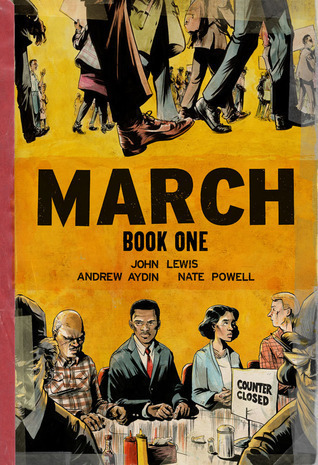#Baird legacy house
Explore tagged Tumblr posts
Text

just doing an updated posting for my muse list and interested fandoms list!
with the fandoms, i'll put my character in bold and then leave the characters i want to interact in parenthesis. i'm oc friendly and will interact with anyone outside of the most desired list, but i wanted to throw that out there.
i do ask that everyone be 20+ and expect to be asked when i message for those who interact with this post.
fandoms list:
la la land: sebastian wilder (mia dolan, laura wilder, keith)
house of the dragon: alicent high tower (criston cole, aemond targaryen, haelena targaryen, rhaenyra targaryen)
game of thrones: jaime lannister (brienne of tarth, elia martell, tyrion lannister), jon snow (any of the starks tbh, wildlings, daenerys targaryen)
avatar, the last airbender: zuko (katara, any of the gaang, uncle iroh), katara (zuko, sokka)
twilight: jacob black (bella swan, billy black, leah clearwater, charlie swan, any of the pack tbh)
the hunger games: katniss everdeen (peeta mellark, gale hawthorne, prim everdeen, haymitch abernathy, finnick odair)
ballads of the songbirds and snakes: coriolanus snow (lucy gray baird, tigris, livia cardew, clemensia), lucy gray baird (coriolanus snow, any of the covey)
top gun: jane elliot, an oc from the original top gun timeline (maverick, ice man), rooster (phoenix, maverick, hangman, bob), maverick (goose, rooster, ice man, any of the recruits in top gun: maverick)
mission impossible: ilsa faust (ethan hunt, any of the team, anyone with an mi6 oc), ethan hunt (ilsa faust, anyone from the team)
star wars: cal kestis (trilla, merrin, cere, greez, bode), trilla suduri (cal kestis, anyone from the empire), obi-wan kenobi (anakin skywalker, padme, satine kryze, luke skywalker)
harry potter: theseus scamander (leta lestrange, newt scamander), harry potter (hermione granger, any of the weasleys, sirius black, remus lupin), severus snape - preferrably in the marauders era to develop those years (lily potter, any of the marauders, any from the golden trio timeline), julian evander, a ravenclaw oc from hogwarts legacy (sebastian sallow, ominous gaunt, poppy sweeting, natsai onai, garreth weasley)
xmen: logan howlett/wolverine (literally any of the xmen but especially rogue and laura, deadpool), scott summers (hank summers, jean grey, logan, any of the xmen), charles xavier, probably first class and days of future past centric (raven/mystique, erik lehnsherr, hank/beast, any of the xmen)
lord of the rings: aragorn (any of the fellowship, eowyn, arwen)
bridgerton: anthony bridgerton (any in the bridgerton family, edwina sharma, kate sharma, sienna, simon the duke), penelope featherington (colin bridgerton, eloise bridgerton, any in the bridgerton family, any in the featherington family)
#game of thrones rp#asoiaf rp#avatar the last airbender rp#twilight rp#thg rp#tbosas rp#top gun rp#la la land rp#star wars rp#harry potter rp#hp rp#got rp#LOTR rp#hotd rp#the hobbit rp#atla rp#mission impossible rp#bridgerton rp#historical rp#fantasy rp#xmen rp
13 notes
·
View notes
Text
starter call for muses i have the most muse for !
please list down below which muse you'd like a starter from (from this list. i'll be posting another starter call later on where you can request any of my muses !) & say which muse of yours it's for !
alice chambers (don't worry darling; fc: florence pugh) amy march (little women; fc: florence pugh) annie cresta (the hunger games; fc: kristine froseth) barbie (barbie 2023; fc: margot robbie) belle french (once upon a time; fc: rachel zegler) beverly marsh (stephen king's it; fc: liana liberato) bree van de kamp (desperate housewives; fc: marcia cross) carly shay (icarly; fc: olivia rodrigo) cathy hiatt (the last five years; fc: anna kendrick) donna sheridan (mamma mia: here we go again; fc: lily james) emma swan (once upon a time; fc: jennifer morrison) georgia miller (ginny & georgia; fc: brianne howey) heather chandler (heathers; fc: jenny boyd) heather mcnamara (heathers; fc: coco jones) jo march (little women; fc: saoirse ronan) josie saltzman (legacies; fc: kaylee kaneshiro) joy mercer (house of anubis; fc: olivia rodrigo) katniss everdeen (the hunger games; fc: erana james) livia cardew (the ballad of songbirds and snakes; fc: emily alyn lind) lizzie saltzman (legacies; fc: jenny boyd) lucy gray baird (the ballad of songbirds and snakes; fc: rachel zegler) nina martin (house of anubis; fc: luna blaise) patricia williamson (house of anubis; fc: jenna ortega) quinn fabray (glee; fc: madison iseman) rachel berry (glee; fc: diana silvers) richie tozier (stephen king's it; fc: justice smith) steve harrington (stranger things; fc: joe keery) veronica sawyer (heathers; fc: rachel zegler)
#┌[ starter call ]┘ ✦ who uses typewriters anyway ?#heathers rp#little women rp#tbosas rp#thg rp#house of anubis rp#it rp#stranger things rp#legacies rp#tvdu rp#mamma mia rp#barbie rp#don't worry darling rp#ouat rp#tl5y rp#icarly rp#glee rp
5 notes
·
View notes
Text





On March 22nd 1875, Alexander “Greek” Thomson died in Glasgow.
Thomson was an architect and architectural theorist in Victorian Glasgow and Scotland.
Thomson was born on 9th April, 1817, to a bookkeeper, John Thomson, and his wife, Elizabeth Cooper Thomson. He was the ninth of twelve children, but his father died when he was just seven years old.
More tragedy followed, as Alexander’s mother, sister, and three of his brothers died between 1828 and 1830. Alexander’s older brother, William, took in the remaining children. They lived together at a house in Hangingshaw, south of Glasgow, with William’s wife and child.Thomson’s career properly began when he was apprenticed to Robert Foote, a Glasgow architect. Later, he was offered a post in the office of the draughtsman John Baird. Together, John Baird II and Thomson set up their own practice in 1848. As well as his business partner, Baird was Thomson’s brother-in-law, having married Thomson’s sister, Jessie, in 1847. Thomson was married on the same day to Jane Nicholson, in a double wedding ceremony with Baird and his bride.
The Egyptian Halls Building on Union Street, Glasgow. Built by Alexander "Greek" Thomson in 1871.
Between 1856 and 1857, Thomson designed and built the Caledonia Road Free Church. Sadly, the interior was destroyed in a fire in 1965, but the exterior still remains.It is a notable work due to its asymmetrical layout and its combination of styles. These styles include ancient Greek and provincial Italian.After nine years of working with Baird, Thomson set up a practice with his brother George, heralding the start of his most productive years as an architect. He built two more churches, Queen’s Park United Presbyterian Church and St Vincent Street Church.The latter is the only complete surviving church of Thomson’s, as Queen’s Park Church was destroyed in the Second World War.
Between 1856 and 1857, Thomson designed and built the Caledonia Road Free Church. Sadly, the interior was destroyed in a fire in 1965, but the exterior still remains.It is a notable work due to its asymmetrical layout and its combination of styles. These styles include ancient Greek and provincial Italian. After nine years of working with Baird, Thomson set up a practice with his brother George, heralding the start of his most productive years as an architect.He built two more churches, Queen’s Park United Presbyterian Church and St Vincent Street Church., the exterior and interior are among the pics. The church is the only complete surviving one of Thomson’s, as Queen’s Park Church was destroyed in the Second World War. Greek influence Thomson, at first, combined several different architectural styles, such as Greek, Italian, Egyptian and Levantine, but later, the Greek style won through.Perhaps the best example of his Greek influence is Holmwood House, as seen in the second pic, which is now owned by the National Trust for Scotland.During renovations of the house, nineteen panels of classical frieze were discovered, which depict scenes from Homer’s Iliad. Thomson has also been credited with the introduction of some elements of sustainable housing.In 1868, he submitted designs to the Glasgow City Improvement Trust, which called for open-ended tenements and glazing, the former providing ventilation, and the latter providing warmth and protection.Alexander Thomson died on this day, 1875, in one of his own houses, on Moray Place in Glasgow.He was buried in Gorbals Necropolis four days later. His widow, Jane, joined him in 1889. One of his most important legacies was the Alexander Thomson Travelling Studentship, which allowed Charles Rennie Mackintosh to study architecture in Glasgow.In 1897, William Clunas, one of Thomson’s former assistants, wrote a glowing description of his employer: “His general appearance was indeed, very much in harmony with the strength and elegance which he imparted to the structures he designed, while the genial smile which so often overspread his face might be fittingly compared to the finished enrichment which was so marked and pleasing a feature of his compositions.”
14 notes
·
View notes
Text
In Memoriam: Honouring the LGBTQIA+ lives lost in 2024
New Post has been published on https://qnews.com.au/in-memoriam-honouring-the-lgbtqia-lives-lost-in-2024/
In Memoriam: Honouring the LGBTQIA+ lives lost in 2024

This year, the LGBTQIA+ community bid farewell to remarkable individuals who left an indelible mark on the world. From trailblazing activists, beloved community members, and entertainers, each of these individuals will be greatly missed.
Bill Whittaker AM
A founding CEO of ACON, Bill Whittaker’s visionary work laid the foundation for HIV advocacy in Australia.
Bobby Goldsmith Foundation Ambassador
A cherished community member who tirelessly supported others through the foundation.
Cecilia Gentili (1972–2024)
An Indigenous artist who redefined the art world with her bold works passed away in Melbourne.
Destiny Rogers (1959–2024)
The QNews writer, historian and entertainer passed away at 64 after a battle with lung cancer.
Glenda Jackson
Glenda first donned full drag in the early 1970s in the “steel city” of Newcastle, inspired by the iconic Les Girls she saw in Sydney.
Indigenous artist who coined term ‘Blak’
A trailblazing Indigenous photographer and multimedia artist, credited with coining the term “Blak”, died in Melbourne.
Ignatius Jones
Australian music icon Ignatius Jones passed after a short illness.
Ian Gelder (1949–2024)
Best known as Kevan Lannister in Game of Thrones, Ian Gelder’s career spanned stage and screen.
Jack Colwell (1989–2024)
The out singer-songwriter self-funded his music as an independent artist and worked for years as a musical director, composer, arranger, teacher and choirmaster.
Jesse Baird and Luke Davies
Sydney couple Jesse Baird and Luke Davies were allegedly murdered in Baird’s Paddington home in February 2024.
John Spellman (1947–2024)
A community icon in Darwin, John Spellman was a beloved figure who nurtured and protected the local community.
Lance Leopard and Carmel
A iconic figure in Brisbane’s LGBTQIA+ community, Lance Leopard and his mother Carmel tragically passed away in a house fire.
Michael Heslin
The actor, best known for his role in Special Opps: Lioness died at just 30.
Nancy Valverde (1931–2024)
Los Angeles butch lesbian trailblazer Nancy Valverde passed at 92.
Neil McLucas
Sportsman Hotel legend and cherished figure in Brisbane’s LGBTQIA+ community, Neil McLucas, passed away this year.
Phil Carswell
Veteran AIDS activist Phil Carswell died at aged 70, leaving behind a powerful legacy from his decades of advocacy.
Richard Simmons (1948–2024)
Los Angeles police confirmed the death of eccentric fitness guru Richard Simmons, one day after his 76th birthday.
Robert Fawkes
Robert Fawkes was a 78er and a champion of both the LGBTQIA+ and sex work communities.
Sphen the Penguin
One half of Sydney’s iconic gay penguin couple, Sphen, captured hearts worldwide.
Steve Ostrow
Ostrow founded the Mature Aged Gays project in 1991 as a safe place where older gay men could meet and socialise
Toby Simkin
From Beat Megaclub to Broadway, producer Toby Simkin was a leader in the creative arts.
For the latest LGBTIQA+ Sister Girl and Brother Boy news, entertainment, community stories in Australia, visit qnews.com.au. Check out our latest magazines or find us on Facebook, Twitter, Instagram and YouTube.
0 notes
Text
I didn’t get tagged but I thought this was nifty ☺️
These are mainly based on personality
I couldn’t pick just one of my children MCs so I just did all four of em—




Characters under the cut:
From left column to right column
Elijah:
Lucy Gray Baird (Hunger Games: Songbirds & Snakes)
Kara (Detroit: Become Human)
Alina Starkov (Shadow & Bone)
Dylan Lenivy (The Quarry)
Newt Scamander (Fantastic Beasts)
Salim Othman (House of Ashes)
Weiss:
D.Va (Overwatch)
Clarice Starling (Silence of the Lambs)
Weiss Schnee (RWBY)
Kaitlyn Ka (The Quarry)
Sam Giddings (Until Dawn)
Laura Kearney (The Quarry)
Lilith:
Anya (Mouthwashing)
Ominis Gaunt (Hogwarts Legacy)
Blake Belladonna (RWBY)
Emily Davis (Until Dawn)
Wendy Torrence (The Shining)
Abigail Blyg (The Quarry)
Raymond:
Daisuke (Mouthwashing)
Lance McClain (Voltron)
Alberto Scorfano (Luca)
Chris Hartley (Until Dawn)
Peter Parker (MCU)
Jacob Custos (The Quarry)
No pressure tags: anyone who wants to! :)

Character inspiration! Feel free to add yours if you want!
Starting with Ashma because I’m obsessed. She’s the level of dramatic as Jean Grey and Sharpay Evans, gets tortured by her father like Hotaru Tomoe, is an absolute QUEEN like Ororo Munroe, and flirts with a law enforcer like there is no tomorrow like Selina Kyle and Talia al Ghul

No pressure tags: @butternutt613, @rypnami, @lilac-ravenclaw, @ravenwind-75, @shyamanuensis, @midnight-faye, @starry-slithers
#hogwarts legacy#hogwarts legacy mc#hogwarts legacy fandom#hogwarts legacy oc#elijah finch#weiss starling#lilith lestrange#raymond sweeney
47 notes
·
View notes
Photo




Scenery of the legacy house. Now with Reshade. (I’m using the LightBrigade preset by @harrie-cc)
#no post-editing#sims 4#sims 4 scenery#Baird legacy house#simdaisies legacy#ts4#reshade#brindleton bay#sims 4 maxis match
7 notes
·
View notes
Text
🚨 BREAKING NEWS ALERT 🚨 🚨
John Conyers Jr., long-serving congressman who co-founded Congressional Black Caucus, dies at 90
By John Otis | Published October 27 at 4:36 PM ET | Washington Post | Posted October 27, 2019 |
John Conyers Jr., who became the longest-serving African American in Congress, co-founded the Congressional Black Caucus and helped create a national holiday in the name of the Rev. Martin Luther King Jr. but whose career rapidly crumbled at 88 when he resigned amid sexual harassment allegations, died Oct. 27 at his home in Detroit. He was 90.
His spokeswoman Holly Baird confirmed the death. Additional details were not immediately available.
A liberal Democrat from what is now Detroit’s 13th Congressional District, Mr. Conyers was first elected in 1964, becoming one of five African Americans in the House. His overwhelmingly Democratic constituents reelected him 26 times over a period spanning 10 presidents, from Lyndon B. Johnson to Donald Trump.
As the longest-serving member at the time of his resignation, Mr. Conyers earned the title “dean of the House of Representatives,” and this job security allowed him to promote progressive, sometimes controversial causes that won him a national following.
He co-sponsored the Voting Rights Act of 1965, which prohibited discrimination at the ballot box. His fierce criticism of the Vietnam War led to clashes with Johnson and landed him on Richard M. Nixon’s “enemies list” of political opponents.
After the terrorist attacks of Sept. 11, 2001, Mr. Conyers voted against the USA Patriot Act because he feared it would roll back civil liberties. He later suggested that President George W. Bush should be impeached, saying he misled the country ahead of the 2003 U.S. invasion of Iraq.
Mr. Conyers’s twilight years were marred by allegations of sexual harassment. According to legal documents published by the online publication BuzzFeed in November 2017, several of his female staff members claimed that he had approached them to request sex and that he had engaged in unwanted touching and other impropriety.
One former staff member received a settlement of more than $27,000 from Mr. Conyers’s office after alleging in 2015 that he fired her for not accepting his sexual advances. The congressman denied any wrongdoing. But after the House Ethics Committee opened an investigation and numerous representatives called for him to step down in November 2017, Mr. Conyers step down from hs post as top Democrat on the House Judiciary Committee. The next month, he announced his resignation, after 52 years in office.
“My legacy can’t be compromised or diminished in any way by what we are going through now,” Mr. Conyers declared defiantly. “This too shall pass.”
Before the scandal, Mr. Conyers had been an inspiration to African Americans from Detroit to the Deep South and became, in effect, a member of Congress at large.
“In many districts around the country, black voters did not feel represented by their leaders so they would reach out to African American congressmen, like Conyers,” said Michael Fauntroy, who interned for Mr. Conyers in the early 1980s and is now an assistant professor of political science at Howard University.
Mr. Conyers, in turn, urged skeptical African Americans to get involved in politics. One of his early mottos was: “Register, vote, run for office. It’s power that counts.” To better harness that power and secure passage of legislation on poverty, racism, human rights, unfair tax policies and health care, Mr. Conyers and 12 other African American House members founded the Congressional Black Caucus in 1971.
Mr. Conyers strongly backed the Rev. Jesse Jackson’s 1984 campaign for the Democratic presidential nomination and was an early supporter of candidate Barack Obama, who was then a Democratic senator from Illinois. Yet Mr. Conyers also could be caustic of fellow Democrats to demonstrate that he was not blindly loyal to anyone.
In 1979, he described President Jimmy Carter as a “hopeless, demented, honest, well-intentioned nerd who will never get past his first administration.” Decades later, Mr. Conyers criticized Obama for making foreign policy too dependent on military muscle. His intention, Mr. Conyers said of Obama, was “to make him a better president.”
He presented himself as an emeritus member of the Washington establishment, and had participated in many high-profile political battles.
Mr. Conyers was the only member of the House Judiciary Committee to take part in impeachment proceedings against President Richard Nixon in 1974 for the Watergate bugging scandal and coverup, and against President Bill Clinton in 1998 for lying about his affair with White House intern Monica S. Lewinsky.
Mr. Conyers considered Nixon a criminal and helped draft articles of impeachment against the president before he resigned. However, he called the effort to impeach Clinton a Republican coup d’etat and “the most tragic event in my career.” He voted no when the House voted to impeach Clinton. Eight years later, Mr. Conyers became the first African American to chair the Judiciary Committee.
All along, Mr. Conyers was a master of the politics of symbolism. He hired civil rights activist Rosa Parks, who worked in his Detroit office for 20 years. He introduced numerous bills calling for reparations for the descendants of slaves, an issue that resonated among blacks but did not gain traction in Congress. More successful was his 15-year struggle to recognize King, the civil rights defender.
Four days after King was assassinated on April 4, 1968, and with the support of his widow, Coretta Scott King, Mr. Conyers proposed the first of many bills calling for a federal holiday in his honor.
The proposal met resistance from Republicans, notably Sen. Jesse Helms (N.C.), who accused King of Communist sympathies and complained that only one other holiday, Columbus Day, was named after a person.
Mr. Conyers kept pushing, millions of people signed petitions and entertainer Stevie Wonder pitched in with the hit single “Happy Birthday.” President Ronald Reagan in 1983 signed legislation setting aside the third Monday in January as Martin Luther King Jr. Day; the day was chosen because it was near King’s Jan. 15 birthday.
In a 2008 interview, Mr. Conyers called it “far and away the thing I am most proud of.”
But as the Detroit Free Press, his hometown paper, once described it, “For every brilliant move, there’s a dud.” Mr. Conyers was famous for missing votes on the House floor. Critics claimed that his effectiveness was dulled by growing arrogance and a refusal to compromise. He was prone to gaffes, prompting Time magazine political columnist Joe Klein to call him “foolishly incendiary.”
When Mr. Conyers ran for mayor of Detroit in 1989, challenging Democratic incumbent Coleman A. Young, he announced his bid by saying, “Move over, Big Daddy, I’m home.” Mr. Conyers finished third in the primary and then lost again in 1993.
Mr. Conyers could be a demanding boss. In addition to the allegations that he sexually harassed staff members, the House Ethics Committee investigated him for pressuring staff members to babysit for his children and to chauffeur him to private events in government vehicles.
After an investigation that lasted more than two years, the panel announced a deal in 2006 in which it dropped the inquiry in return for Mr. Conyers’s promise that he would not ask his staff members to do nonofficial work for him.
In 2009, Mr. Conyers’s wife, Monica Esters Conyers — a former campaign staff member 36 years his junior — was convicted of bribery while serving on the Detroit City Council and was sentenced to 37 months in prison.
John James Conyers Jr. was born in Detroit on May 16, 1929. He served in the Army Corps of Engineers during the Korean War. With the help of the G.I. Bill for veterans, he graduated from Detroit’s Wayne State University in 1957 and its law school in 1958.
His interest in public affairs was partly because of his father’s position as an international representative for the United Auto Workers and, for a time, Mr. Conyers worked as a labor lawyer. He also was a legislative assistant to Rep. John D. Dingell (D-Mich.), one of the few House members to serve even longer than Mr. Conyers.
In the early 1960s, local Democratic Party elders considered Mr. Conyers too young to pursue federal office. Despite their opposition, Mr. Conyers ran in the 1964 Democratic primary for what was then Detroit’s 1st Congressional District and won by a mere 45 votes. He then scored a landslide victory in the general election.
Mr. Conyers had two sons, John III and Carl. Complete information on survivors was not immediately available.
In office, Mr. Conyers went on to fend off challenges from candidates who hadn’t yet been born when he was first elected.
#african american history#african american#house of representatives#houseofrepresentatives#democratic party#democrats#democracy#us politics#politics#u.s. news#u.s. politics#in memoriam#rip#trending topics#top stories google news#top news
2 notes
·
View notes
Text
Isaac Olson’s year in review

This was my first year writing for Dusted. As I tried to nail down what I was looking for in a record, I returned frequently to John Berger’s essay, “The Ideal Critic and the Fighting Critic”. Berger evaluated art by asking, “does this work help or encourage men [sic] to know and claim their social rights?” It’s not that artists “can or should be primarily concerned with the justice of a social cause,” but that “a valid work of art promises in some way or another the possibility of an increase, an improvement...it increases our awareness of our own potentiality”. It’s the identification with and negotiation between different ways of seeing (and hearing) that tears down the walls. Communion, singularity, freedom: states all the more precious for being in short supply as another bullshit year in Trumpistan ground inexorably on.
The usual caveats apply:
1.) I spent most of 2018 discovering older records.
2.) I missed a ton of great records this year.
3.) There are plenty of records I’ve heard recently that, given more time, would likely have made this list.
4.) These aren’t the most important records of 2018, just the ones that meant the most to me.
Album of the Year
Marisa Anderson— Cloud Corner (Thrill Jockey)
Cloud Corner by Marisa Anderson
This was the most restorative, cathartic record I heard this year, and it’s a huge leap forward for my favorite living guitarist.
Think Locally, Dance Globally
The Fossil Lickers— S/T (Blue Hole)
The Fossil Lickers by The Fossil Lickers
This tape brought me more joy than pretty much anything else I heard this year, but I’m a fiddle tune fanatic. Non-fanatics need, at most, one album of old time fiddle tunes every few years. Make it this one.
I’m Not Here to Hunt Rabbits: Guitar and Folk Styles from Botswana—V/A (Pirahna)
I'm Not Here To Hunt Rabbits by Various Artists
Angelique Kidjo— Remain in Light (Kravenworks)
youtube
Follow Your Arrow
Kacey Musgraves— The Golden Hour (MCA Nashville)
youtube
I’m a poptimism skeptic because pop criticism frequently confuses the popular with the important and the important with the good. Plus, I don’t like when money and attention are directed towards people who have too much of both. That said, I regret to inform my fellow contrarians that The Golden Hour is as good as everyone says. Musgraves dosed mainstream country with a much needed hit of empathy, humility, and starry-eyed wonder.
Neko Case—Hell-On (Anti-)
Hell-On by Neko Case
Neko Case comes to terms with the fact that letting people in and ceding control doesn’t tame your artistic vision: it enhances it, and make it stronger, weirder, fuller. Quoth Kacey Musgraves, “Love is a wild thing.”
John Prine— The Tree of Forgiveness (Oh Boy)
The Tree of Forgiveness by John Prine
John Prine, on what is hopefully not his last album, has chilled out enough to fully embrace his role as America’s cornpone bodhisattva. Prine on heaven: “I'm gonna have a cocktail: vodka and ginger ale/Yeah I'm gonna smoke a cigarette that's nine miles long/I'm gonna kiss that pretty girl on the tilt-a-whirl/Yeah this old man is goin' to town.” Kacey Musgraves on heaven: “My idea of heaven is to burn one with John Prine.” Amen.
The Road Reversed
Daniel Bachman— The Morning Star (Three Lobed)
The Morning Star by Daniel Bachman
This was the sound of the gut-level anxiety and wounded hope I felt throughout 2018.
Nathan Bowles—Plainly Mistaken (Paradise of Bachelors)
Plainly Mistaken by Nathan Bowles
As a critic, my reaction to Plainly Mistaken is that it’s an intriguing trip through the American Primitive genre’s favorite touchstones: Appalachian picking, smeared drones, spiritual jazz, and modernist minimalism. As an amateur banjo player myself, my reaction is awe and envy.
The Newbies Lift Off
Tierra Whack— Whack World (Self Released)
youtube
I don’t listen to nearly as much hip-hop as I used to, but this late breaking favorite is weirder, braver, slyer, funnier, more frustrating and, by a damn sight, catchier than just about any other avant garde or experimental record I’ve heard this year.
Makaya McCraven—Universal Beings (International Anthem)
Universal Beings by Makaya McCraven
Makaya McCraven convened some of the best young-ish jazz musicians working today for sessions in four cities: New York, Chicago, London, and Los Angeles, the results of which he chopped, remixed, and looped. The utopian vibe is grounded a bit by McCraven’s heavy editorial hand, and his skittering, Dilla-indebted production is so dense that it’s a lot to take over the course of 90 minutes. Treat it like four city-centric EPs, and it’s one of the most rewarding listens of the year.
Sons of Kemet—Your Queen is a Reptile (Impulse)
youtube
Martial jazz/dub/free-funk soundtrack to the decolonized, matriarchal revolution by its token all-male house band.
Andrew Bernstein—An Exploded View of Time (Hausu Mountain)
An Exploded View of Time by Andrew Bernstein
Tashi Dorji and Tyler Damon— Leave No Trace: Live in St. Louis (Family Vineyard)
Leave No Trace: Live In St. Louis by Tashi Dorji & Tyler Damon
2018 MVP: Mary Lattimore
Mary Lattimore—Hundreds of Days (Ghostly)
Hundreds of Days by Mary Lattimore
Meg Baird and Mary Lattimore—Ghost Forests (Third Lobed)
Ghost Forests by Meg Baird and Mary Lattimore
Velvet Hammer in a Cowboy Band
I’m a sucker for pedal steel guitar, and I’m a sucker for weird music. It was a good year for weird pedal steel guitar music.
Barry Walker Jr.— Diaspora Urkontinent (Driftless)
Diaspora Urkontinent by Barry Walker
Venetian Snares x Daniel Lanois—(Planet Mu)
Venetian Snares x Daniel Lanois by Venetian Snares x Daniel Lanois
Peter Brötzmann and Heather Leigh— Sparrow Nights (Trost)
Sparrow Nights by Brötzmann / Leigh
Saariselka—Ceres (Longform Editions)
Ceres by Saariselka
Honorable Mentions
● Amy Rigby—The Old Guys (Southern Domestic Recordings)
● Bardo Pond—Vol. 8 (Fire Recordings)
● Body/Head—The Switch (Matador)
● Courtney Marie Andrews—May Your Kindness Remain (Fat Possum)
● The Ex—27 Passports (Ex Records)
● Ezra Feinberg—Pentimento and others (Related States)
● HC McEntire—Lionheart (Merge)
● Idris Ackamoor and the Pyramids—An Angel Fell (Strut)
● Kurt Vile— Bottle It In (Matador)
● Nathan Salsburg— Third (No Quarter)
● The Necks—Unfold (Northern Spy)
● Negro—Clase Media (La Castanya)
● The Other Years—S/T (No Quarter)
● Red River Dialect—Broken Stay Open Sky (Paradise of Bachelors)
● Sarah Davachi— Let Night Come On Bells End The Day (Recital Program)
● Sarah Louise— Deeper Woods (Thrill Jockey)
● Superchunk—What a time to be Alive (Merge)
● Tim Hecker—Konoyo (Kranky)
● Träden – Träden (Subliminal Sounds)
● Willie Nelson— Last Man Standing (Legacy)
● Wussy—What Heaven is Like (Shake It)
● Woven Skull—Woven Skull (Oaken Palace)
● Yob— Our Raw Heart (Relapse)
● Yuzo Iwata—Daylight Moon (Siltbreeze)
#dusted magazine#yearend 2018#isaac olson#marisa anderson#fossil lickers#i'm not here to hunt rabbits#angelique kidjo#kasey musgraves#neko case#john prine#nathan bowles#tierra whack#makaya mccraven#sons of kemet#andrew bernstein#tashi dorji#tyler damon#mary lattimore#meg baird#barry walker jr#Venetian Snares x Daniel Lanois#Peter Brötzmann and Heather Leigh— Sparrow Nights (Trost)
2 notes
·
View notes
Text
Buck O’Neil






John Jordan (Buck) O'Neil (November 13, 1911 – October 6, 2006) was a first baseman and manager in the Negro American League, mostly with the Kansas City Monarchs. After his playing days, he worked as a scout, and became the first African American coach in Major League Baseball. In his later years he became a popular and renowned speaker and interview subject, helping to renew widespread interest in the Negro leagues, and played a major role in establishing the Negro Leagues Baseball Museum in Kansas City, Missouri.
O'Neil's life was documented in Joe Posnanski's award-winning 2007 book The Soul of Baseball.
Playing career
Born in rural Carrabelle, Florida, O'Neil was initially denied the opportunity to attend high school due to racial segregation; at the time, Florida had only four high schools specifically for African Americans. However, after working a summer in a celery field with his father, O'Neil left home to live with relatives and attend Edward Waters College in Jacksonville, where he completed high school and two years of college courses. He left Florida in 1934 for several years of semi-professional "barnstorming" experiences (playing interracial exhibition games). The effort paid off, and in 1937, O'Neil signed with the Memphis Red Sox for their first year of play in the newly formed Negro American League. His contract was sold to the Monarchs the following year.
O'Neil had a career batting average of .288 between 1937 and 1950, including five .300-plus seasons at the plate, as well as five seasons in which he did not top .260. In 1946, the first baseman led the NAL with a .350 batting average and followed that in 1947 with a .305 mark in 16 games. He also posted averages of .344 in 1940 and .330 in 1949. He played in four East-West All-Star Games in three different seasons and two Negro World Series.
A World War II tour in the U.S. Navy from 1943–1945 briefly interrupted his playing career.
O'Neil was named manager of the Monarchs in 1948 after Frank Duncan's retirement, and continued to play first base as well as a regular through 1951, dropping to part-time status afterward. He managed the Monarchs for eight seasons from 1948 through 1955 during the declining years of the Negro leagues, winning two league titles and a shared title in which no playoff was held during that period. His two undisputed pennants were won in 1953 and 1955, when the league had shrunk to fewer than six teams.
Negro leagues career statistics
O'Neil was known to have played full-time in 1951 and as a reserve and pinch-hitter as late as 1955, but Negro leagues statistics for the period 1951 and after are considered extremely unreliable.
Source: Hall of Fame Committee on African-American Baseball, 2006
Off the field
When Tom Baird sold the Monarchs at the end of the 1955 season, O'Neil resigned as manager and became a scout for the Chicago Cubs. He was the first African American scout in Major League Baseball, and was named the first black coach in the major leagues by the Cubs in 1962 and is credited for signing Hall of Fame player Lou Brock to his first contract. O'Neil is sometimes incorrectly credited with also having signed Hall of Famer Ernie Banks to his first contract; Banks was originally scouted and signed to the Monarchs by Cool Papa Bell, then manager of the Monarchs' barnstorming B team in 1949. Banks played briefly for the Monarchs in 1950 and 1953, his play interrupted by Army duty. O'Neil was Banks' manager during those stints, and Banks was signed to play for the Cubs more than two years before O'Neil joined them as a scout.
After many years with the Cubs, O'Neil became a Kansas City Royals scout in 1988, and was named "Midwest Scout of the Year" in 1998.
O'Neil gained national prominence with his compelling descriptions of the Negro leagues as part of Ken Burns' 1994 PBS documentary on baseball. Afterwards, he became the subject of countless national interviews, including appearances on the Late Show with David Letterman and The Late Late Show with Tom Snyder.
In 1990, O'Neil led the effort to establish the Negro Leagues Baseball Museum (NLBM) in Kansas City, and served as its honorary board chairman until his death.
In 1996, O'Neil became the recipient of an Honorary Doctor of Business Administration degree from the University of Missouri – Kansas City in Kansas City, Missouri.
In February 2002, at the end of the NLBM's Legacy Awards annual banquet, O'Neil received an induction ring from the baseball scouts Hall of Fame in St. Louis.
O'Neil and all-star Ichiro Suzuki developed a relationship, with Ichiro attending the Negro Leagues Baseball Museum with O'Neil and seeking O'Neil's knowledge of the game when the Seattle Mariners would have road games in Kansas City. "With Buck, I felt something big. The way he carried himself, you can see and tell and feel he loved this game."
A busy final year
On May 13, 2006, he received an honorary doctorate in education from Missouri Western State University where he also gave the commencement speech.
O'Neil was a member of the 18-member Baseball Hall of Fame Veterans Committee from 1981 to 2000 and played an important role in the induction of six Negro league players from 1995 to 2001 during the time the Hall had a policy of inducting one Negro leaguer per year. O'Neil was nominated to a special Hall ballot for Negro league players, managers, and executives in 2006, but received fewer than the necessary nine votes (out of twelve) to gain admission; however, 17 other Negro league figures were selected.
God's been good to me. They didn't think Buck was good enough to be in the Hall of Fame. That's the way they thought about it and that's the way it is, so we're going to live with that. Now, if I'm a Hall of Famer for you, that's all right with me. Just keep loving old Buck. Don't weep for Buck. No, man, be happy, be thankful.
On July 29, 2006, O'Neil spoke at the induction ceremony for the Negro league players at the Baseball Hall of Fame.
Still playing after all these years
Just before the Hall of Fame ceremonies, O'Neil signed a contract with the Kansas City T-Bones on July 17 to allow him to play in the Northern League All-Star Game. Before the game, O'Neil was "traded" to the Fargo-Moorhead RedHawks and was listed as the starting shortstop, although after drawing an intentional walk, he was replaced before actually playing in the field. At the end of the inning, another "trade" was announced that brought O'Neil back to the Kansas City team, allowing him to lead off the bottom of the inning as well (drawing another intentional walk).
The T-Bones originally claimed that O'Neil, at age 94 years, 8 months, and 5 days, would be by far the oldest person to appear in a professional baseball game (surpassing 83-year-old Jim Eriotes who had struck out in another Northern League game just a week earlier). However, that claim was in error, as the Schaumburg Flyers of the Northern League had signed Ted "Double Duty" Radcliffe to a one-game contract and allowed him to face one batter on June 19, 1999 when he was 96 years old. While O'Neil was the second-oldest pro player, the claim was amended that he would be the oldest person to make a plate appearance in a professional baseball game.
The Kansas City T-Bones retired his number on May 26, 2006.
Death and legacy
On August 5, 2006, O'Neil was admitted to a Kansas City hospital after complaining that he didn't feel well. He was admitted for fatigue and was released three days later only to be re-admitted September 17. On September 28, Kansas City media reported that O'Neil's condition had worsened. On October 6, O'Neil died at the age of 94 of heart failure and bone marrow cancer.
During the ESPN opening day broadcast of the 2007 Kansas City Royals, on April 2, 2007, Joe Morgan announced that the Royals would honor O'Neil by placing a fan in the Buck O'Neil Legacy Seat in Kauffman Stadium each game who best exemplifies O'Neil's spirit. The seat itself has been replaced by a red seat amidst the all-blue seats behind home plate in Section 101, Row C, Seat 1. Due to the renovations and section renumbering in 2009 the seat number is now Section 127, Row C, Seat 9, and the seat bottom is now padded. The first person to sit in "Buck's seat" was Buck O'Neil's brother, Warren.
Presidential Medal of Freedom
On December 7, 2006, O'Neil was posthumously awarded the Presidential Medal of Freedom by President George W. Bush; the award was given to his brother, Warren, on his behalf on December 15. He was chosen due to his "excellence and determination both on and off the baseball field", according to the White House news release. He joins such sports notables as Jesse Owens, Muhammad Ali, Jackie Robinson, and Jack Nicklaus in receiving the United States' highest civilian honor. On November 13, 2012 the family of Buck O'Neil donated his Presidential Medal of Freedom to the Negro Leagues Baseball Museum in honor of what would have been O'Neil's 101st birthday. The medal will be showcased in a special area of the NLBM dedicated to O'Neil.
Beacon of Life Award
On March 31, 2007—the day of Major League Baseball's first annual Civil Rights Game—O'Neil was posthumously awarded MLB's first annual Beacon of Life Award at the inaugural MLB Beacon Awards luncheon.
Lifetime Achievement Award
On October 24, 2007, O'Neil was posthumously given a Lifetime Achievement Award named after him. He had fallen short in the Hall of Fame vote in 2006; however, he was honored in 2007 with a new award given by the Hall of Fame, to be named after him. A statue of O'Neil is to be placed inside the Negro Leagues Baseball Museum on 18th and Vine in Kansas City, and the Buck O'Neil Lifetime Achievement Award will be presented no more than every three years.
At the Hall of Fame induction ceremony on July 27, 2008, Joe Morgan gave a dedication speech for the award and talked about O'Neil's life, repeatedly citing the title of O'Neil's autobiography, I Was Right on Time.
Other honors
Buck O'Neil Run/Walk
"John Jordan 'Buck' O'Neil" exhibit (in the Ted Williams Museum and Hitters Hall of Fame)
Hall of Famous Missourians: In February 2012 O'Neil was inducted to the Hall, located in the Missouri state capitol building in Jefferson City. A bronze bust of O'Neil will be on permanent display by the sculptor E. Spencer Schubert.
Wikipedia
6 notes
·
View notes
Text
Zaha Hadid Foundation Inaugural Director
Zaha Hadid Foundation Inaugural Director, Professor Paul Greenhalgh, Building Plans, Bursaries, ZHF Architecture
Zaha Hadid Foundation Inaugural Director News
28 February 2022
Inaugural Director Announced For Zaha Hadid Foundation
New Building Plans And Bursaries Announced
Professor Paul Greenhalgh
Professor Paul Greenhalgh – Zaha Hadid Foundation Inaugural Director
Monday 28th of February 2022 – The Zaha Hadid Foundation (ZHF) is pleased to announce the appointment of Professor Paul Greenhalgh as its inaugural director. He is an art historian and museum director with considerable international experience, a curator and scholar of art, design, and architecture. His previous roles have included Director of the Sainsbury Centre (UK), Director and President of the Corcoran Gallery of Art and College of Art and Design (Washington DC), President of NSCAD University (Canada), and Head of Research at the V&A Museum (London). He has curated many major exhibitions internationally, and published widely on art, design and architecture in the Modern period.
Professor Greenhalgh said: “It is an enormous honour to be leading the Zaha Hadid Foundation in its inaugural phase. We intend to preserve the magnificent creative legacy of Zaha, by making publicly available our unrivalled collection of her works, and presenting these to the world through exhibitions at home and internationally. In the creative and intellectual spirit of Zaha, we will also address the condition of architecture and related arts of our times, through education and research programmes. Zaha loved to teach and to promote understanding of Modern architecture and art. She constantly sought to give access to the world of architecture and design to young people and a wider public. Through programmes of bursaries, grants, and awards, ZHF will operate in this same spirit.”
Professor Jane Pavitt has been appointed Head of Research and Learning at ZHF. She is a senior manager from the university sector, and a curator, writer and historian of architecture and design. Her previous roles include Head of Research Impact at Kingston University, Dean of Humanities at the Royal College of Art, and Principal Research Fellow at Brighton University and the Victoria and Albert Museum. She has curated and authored a wide range of exhibitions and publications on modern and contemporary architecture and design, in national institutions.
Leonora Baird-Smith has been appointed Head of Collections at ZHF, responsible for the collections, archive, and library of the Foundation. Her previous roles include Head of Collections Management at the British Museum, and Head of Museums at the Metropolitan Police Service. At the British Museum she was responsible for the management of over eight million objects and one of the largest UK and international object loans programmes.
Four further posts are currently being recruited to support the collections, exhibition, research, and learning programmes, and a suite of activities has been initiated to set the inaugural creative agenda for the institution.
In its first three months of full activity:
• Planning has begun to create major research and exhibition facilities in Zaha Hadid’s name in Central London. The new Foundation’s buildings will house a gallery, museum, learning centre, research facility and think tank, dedicated to promoting Zaha Hadid, modern and contemporary architecture, design, and related arts. • Museum-grade storage and collections management system are being created to manage the collection and make it available online. The Foundation holds over 10,000 works by or associated with Zaha Hadid’s life and work across a wide range of media, including paintings, models, plans, drawings, furniture, prints, jewellery, and fashion. • Three Zaha Hadid Low Income Bursaries will be presented to students at the London School of Architecture. These awards will cover all fees and living expenses for two years, for each student. • A collaboration is currently underway with the MA Curating the Art Museum programme at The Courtauld Institute. This will result in a student-led exhibition on an aspect of Zaha’s work.
About the Zaha Hadid Foundation
The Zaha Hadid Foundation (ZHF) is a charitable organisation founded in 2013 by the globally renowned architect, designer and artist Zaha Hadid. Fully launched in 2022, the founding purpose of ZHF is to preserve and make publicly available the full range of Zaha’s extraordinary output, and more broadly to advance research, learning, and the enjoyment of related areas of modern architecture, art and design. Zaha Hadid was an Iraqi woman, and an émigré who moved first to Lebanon before making London her permanent home. Her rise to global prominence was by no means an easy one. In this spirit, ZHF will actively support young people and students from diverse and complex backgrounds in their quest to become architects, designers and scholars.
The full development of ZHF was inevitably delayed by Zaha’s tragic early death in 2016, but work is now fully underway to carry out her intended vision. A director and senior team were appointed in 2021. ZHF is housed in two buildings in London and has a collection of c.10,000 works across a range of media as well as an archive and a research library. The Foundation is now in its first strategic planning phase and is in the process of developing its buildings, managing and cataloguing its collection, and organising its first public programmes and bursary awards.
At the end of this first phase, ZHF’s facilities and collections will be publicly accessible both physically and digitally through its website and online database. Its programmes of research and learning likewise will be fully active. ZHF aims to facilitate the work of practicing architects, designers, artists, scholars and the general public alike, in order to advance knowledge across the creative sector. Creative collaborations with other organisations are a core part of the ZHF mission.
Zaha Hadid
Zaha Hadid is globally recognised as one of the most important architects of the modern period, frequently credited with developing a whole new architectural language in her quest for what she described as ‘complex, dynamic and fluid spaces.’
Born in Baghdad, Iraq in 1950, Zaha was schooled in Iraq, Switzerland, and England, before studying mathematics at the American University of Beirut, Lebanon. After moving to London from Beirut in 1972, Zaha soon enrolled to study architecture at the Architectural Association and was awarded the prestigious Diploma Prize upon graduation in 1977.
Zaha then went to work for her former professors Rem Koolhaas and Elia Zenghelis at the Office for Metropolitan Architecture (OMA), Rotterdam. Shortly after, in 1979, she founded her eponymous practice Zaha Hadid Architects (ZHA) in London.
As a passionate educator, deeply committed to the support of young people, and new ideas, she continued to teach as her practice flourished, first at the Architectural Association (until 1987) and then at prestigious institutions around the world including Cambridge, Columbia, Harvard School of Design, University of Applied Arts, Vienna and Yale.
Zaha’s outstanding contribution to architecture and the arts was recognised during her life with numerous awards, including the Stirling Prize (2010 and 2011). She was the first female recipient of the Pritzker Prize (2004) and the first women (in her own right) to receive the Royal Gold Medal in recognition of her lifetime’s work (2015). She died, at the age of 65, in 2016.
Zaha Hadid Foundation images / information received 280222
Zaha Hadid Architects e-architect
Zaha Hadid Architects Designs in China
Chinese Architecture Designs by Zaha Hadid Architects – selection below:
Tower C at Shenzhen Bay Super Headquarters Base, Shenzhen image courtesy of architectural office Tower C at Shenzhen Bay
Shenzhen Science & Technology Museum, Shenzhen, China rendering © Brick Shenzhen Science & Technology Museum
Xi’an International Football Centre, Xi’an render by Atchain Xi’an International Football Centre
Leeza SOHO, Lize Financial Business District, Beijing, China Design: Zaha Hadid Architects (ZHA) photograph : Hufton+Crow Leeza SOHO in Beijing
China Architectural Designs
Chinese Architecture Designs – architectural selection below:
Chinese Architecture Designs – chronological list
Changzhou Culture Center Architect: gmp · von Gerkan, Marg and Partners · Architects photography © Schran Images Changzhou Culture Center Building
Gallery at Hongqiao World Centre in Shanghai image from architects Gallery at Hongqiao World Centre in Shanghai
Chinese Architecture
Chinese Architects
Zaha Hadid Books
Zaha Hadid Architects – All Projects + Practice Information
Comments / photos for the Zaha Hadid Foundation Inaugural Director page welcome
The post Zaha Hadid Foundation Inaugural Director appeared first on e-architect.
0 notes
Photo

Friday Releases for September 3
Friday is the busiest day of the week for new releases, so we've decided to collect them all in one place. Friday Releases for September 3 include Shang-Chi and the Legend of the Ten Rings, Mogul Mowgli, Sometimes I Might Be Introvert, and more.
Shang-Chi and the Legend of the Ten Rings
Shang-Chi and the Legend of the Ten Rings, the new movie from Destin Daniel Cretton, is out today.
Marvel Studios' "Shang-Chi and the Legend of the Ten Rings" stars Simu Liu as Shang-Chi, who must confront the past he thought he left behind when he is drawn into the web of the mysterious Ten Rings organization.
Cinderella
Cinderella, the new movie from Kay Cannon, is out today.
Cinderella is a musically-driven bold new take on the traditional story you grew up with. Our heroine (Cabello) is an ambitious young woman whose dreams are bigger than the world will allow, but with the help of her Fab G (Billy Porter), she is able to persevere and make her dreams come true.
Wild Indian
Wild Indian, the new movie from Lyle Mitchell Corbine Jr., is out today.
Decades after covering up his classmate’s murder, Michael (Michael Greyeyes) has moved on from his reservation and fractured past. When a man who shares his violent secret seeks vengeance, Michael goes to great lengths to protect his new life with his wife (Kate Bosworth) and boss (Jesse Eisenberg) from the demons of his past.
The Gateway
The Gateway, the new movie from Michele Civetta, is out today.
Shea Whigham, Olivia Munn and Frank Grillo star in this edge of your seat, gritty crime thriller. Whigham is Parker, a down on his luck social worker who finds himself in over his head when he tries to protect his client from her recently paroled husband. Can Parker save the family from the violent threat of the maniacal drug dealer and his crew, desperate to reclaim their priceless stash at any cost?
Good
Good, the new movie from Justin Etheredge, is out today.
Payton is a young Black man with a chance to marry into the upper echelons of Black society. But first he must abandon a secret, an unborn child with an ex-girlfriend. He is in desperate need of money and time away from his fiancé, who knows nothing about the baby. He finds a solution in wealthy and stubborn Gregory Devereaux (Keith David), an elderly regular from his favorite late-night diner. Hired by Devereaux’s estranged daughter as his caretaker, Payton quickly becomes Gregory’s confidant, and Payton’s problems seem to disappear. But as Devereaux nears death - with the wedding and the baby’s birth fast approaching - Gregory’s past sins force Payton to reckon with his own decisions as a man. He must finally choose: marry rich, or do what’s right.
Zone 414
Zone 414, the new movie from Andrew Baird, is out today.
Guy Pearce, Matilda Lutz and Travis Fimmel star in the sci-fi thriller set in Zone 414, a dangerous, dark colony of humanoids known as “the city of robots.” The colony’s creator (Fimmel) hires private investigator David Carmichael (Pearce) to track down his missing daughter. David teams up with Jane (Lutz), a highly advanced A.I. equipped with the same technology of her fellow humanoids, but with all the emotions, feelings and dreams of a human being. They travel through the city uncovering clues and a crime that calls into question the origins and true purpose behind the city of artificial humans.
We Need To Do Something
We Need To Do Something, the new movie from Sean King O’Grady, is out today.
Seeking shelter from a storm, a family find themselves trapped for days with no sign of rescue and untold evils lurking just beyond the walls in this wildly fun house-of-horrors thrill ride.
Yakuza Princess
Yakuza Princess, the new movie from Vicente Amorim, is out today.
Set in the expansive Japanese community of Sao Paulo in Brazil — the largest Japanese diaspora in the world — YAKUZA PRINCESS follows Akemi (MASUMI), an orphan who discovers she is the heiress to half of the Yakuza crime syndicate. Forging an uneasy alliance with an amnesiac stranger (Rhys Meyers) who believes an ancient sword binds their two fates, Akemi must unleash war against the other half of the syndicate who wants her dead.
Mogul Mowgli
Mogul Mowgli, the new movie from Bassam Tariq, is out today.
The debut narrative feature from award-winning documentary filmmaker Bassam Tariq, MOGUL MOWGLI follows the story of a rapper (RIZ AHMED) who, on the cusp of his first world tour, is struck down by an illness that forces him to face his past, his family, and the uncertainty of his legacy.
Worth
Worth, the new movie from Sara Colangelo, is out today.
An attorney learns a lesson in empathy when he is faced with the near-impossible task of determining how to compensate families who suffered incalculable losses as a result of the September 11th attacks in 2001. Based on true events.
Golf Club: Wasteland
Golf Club: Wasteland, the new game from Demagog Studio and Untold Tales, is out today.
The rich fled to Mars but venture back to a desolate Earth for a round of golf. Each hole in the wasteland offers its own little story and possible puzzle to sink the perfect shot. Play through destroyed brutalist monuments, crumbling shopping malls, and abandoned museums as neon signs and poignant graffiti take swings at current events, Silicon Valley culture and humanity.
Sometimes I Might Be Introvert
Sometimes I Might Be Introvert, the new album from Little Simz, is out today.
SG8*
SG8*, the new album from Duckwrth, is out today.
0 notes
Link
The GameStop saga is captivating Wall Street — for good reason What’s happening: Shares of GameStop (GME), a legacy company whose stores are often located in struggling malls, have soared dramatically over the past two sessions as day traders push the stock with growing fervor. The stock, which closed out 2020 at $18.84 per share, finished the day at $76.79 after trading was halted multiple times due to volatility. At one point, it climbed to nearly $160, a record high. You read that correctly. GameStop, which is expected to lose money this year and next, has more than quadrupled in value in under a month because it’s effectively become a meme stock. Since the beginning of 2020, it’s jumped more than 1,100%, outpacing even Tesla’s gains. Shares are up another 20% in premarket trading. Investors on social media had been arguing that GameStop was seriously undervalued and cheered earlier this month when the company added Chewy founder Ryan Cohen, who has been pushing a digital overhaul, to its board. Now, the focus is on momentum, as small investors hope the hype can help the stock keep rising. It’s evident, however, that the saga has grown into much more than an argument over the future of a video game retailer, or the merits of different trading approaches. As no-fee apps like Robinhood democratize access to financial markets, some are reading it as a generational fight between the old and new guard of the investing world. Users on Reddit cheered when veteran short seller Citron Research said it would stop commenting on the stock, citing harassment from GameStop’s backers. Melvin Capital Management, which bet against GameStop’s rise, has had to accept an infusion of cash after suffering steep losses, the Wall Street Journal reports. “As someone who started trading stocks in the late ’90s in college, I would always remember watching when the small retail trading groups would get crushed by hedge funds and savvy short-sellers,” Oanda analyst Edward Moya said in a note to clients this week. “What happened with GameStop’s stock is a reminder of how times are changing.” David certainly now has Goliath’s attention. “Starts opening r/WSB with my usual morning tabs,” market strategist Michael Antonelli of R.W. Baird tweeted Monday, referring to the Reddit message board where much of the GameStop action has been coordinated. Traders on such platforms have been plugging other stocks with major results, too. BlackBerry shares, another fan favorite, are up more than 170% in 2021. They jumped 28% on Monday alone. Big picture: The wisdom of such trading decisions is certainly debatable. After all, it’s near impossible to argue that GameStop’s value has actually increased exponentially in a matter of weeks. Some gains are also attributable to a so-called “short squeeze,” as those who bet against the stock rush to buy in so they can cover some of their losses. But once the GameStop dust settles, expect Wall Street’s asset managers to watch where the retail trading hive mind wanders next. Clearly, it can have an impact. Janet Yellen has been confirmed. Now she gets to work Lawmakers confirmed Janet Yellen as Treasury secretary on Monday, making her the first woman in American history to hold the position. Now, she’s tasked with shepherding President Joe Biden’s $1.9 trillion stimulus package through Congress. And with former President Donald Trump’s second impeachment trial set to begin in the Senate in just two weeks, there’s pressure to act fast. That could be a problem, given opposition to parts of the package from Democrats and Republicans. The latest: Members of both parties expressed reservations about spending so much money on a Sunday call with Brian Deese, head of the National Economic Council, multiple aides told my CNN colleagues. “It seems premature to be considering a package of this size and scope,” Sen. Susan Collins, a moderate Republican from Maine, said in a statement. While lawmakers acknowledge more money for testing and vaccines is essential, billions in state and local funding, $1,400 stimulus checks and raising the federal minimum wage to $15 an hour are proving more controversial. Conversations in the coming days will test Biden’s commitment to promoting bipartisanship. Biden and Yellen are angling to get members of both parties on board. But Vermont Sen. Bernie Sanders, the incoming chairman of the Senate Budget Committee, said Sunday that Democrats would use a procedural tactic to pass major parts of the measure if Republicans don’t budge. Biden didn’t rule the method out on Monday. Investor insight: With Democrats in control of both houses of Congress and the White House, investors have been banking on the swift passage of additional stimulus measures. As the battle lines are drawn, some are getting nervous. Jim Reid of Deutsche Bank said Senate Majority Leader Chuck Schumer’s remarks that a bill could take four to six weeks to pass were a wake-up call. “[This] seemed to remind markets of the underlying risks to a market trading at the highs,” he said in a note to clients Tuesday. Pfizer and AstraZeneca take heat in Europe Delays over delivering vaccines from AstraZeneca (AZN) and Pfizer (PFE) in Europe are a harsh reminder that successful vaccination campaigns remain dependent on output from the private sector. The latest: AstraZeneca has informed EU leaders that it will not be able to deliver as many doses of its vaccine as promised, putting government rollout plans at risk. The news comes after Pfizer delivered fewer doses of its vaccine than expected last week. Government leaders in Europe are furious, claiming the holdups will have serious consequences. “The European Union wants the ordered and pre-financed doses to be delivered as soon as possible,” EU Health Commissioner Stella Kyriakides said in a statement. “And we want our contract to be fully fulfilled.” Big picture: The full consequences of the delays will become apparent in the coming weeks. Pfizer said it will resume deliveries as scheduled this week after upgrading its plant in Belgium so it can churn out more doses; problems at AstraZeneca, which pointed to lower-than-expected yield at a European site, are believed to be more severe. The situation highlights how fragile vaccine supply chains are as they get up to speed, and underscores the risks to estimates from economists and investors about when life will return to normal. “We will have more of these ups and downs until we get to a stable process,” Prashant Yadav, a medical supply chain expert and senior fellow at the Center for Global Development, told me. Up next 3M (MMM), Alaska Air (ALK), American Express (AXP), GE (GE), Johnson & Johnson (JNJ), Lockheed Martin (LMT), UBS, Verizon (VZ) and Xerox (XRX) report earnings before US markets open. Capital One, Microsoft (MSFT), Starbucks (SBUX) and Texas Instruments (TXN) follow after the close. Also today: US consumer confidence data for January posts at 10 a.m. ET. Coming tomorrow: A massive earnings week continues with Apple (AAPL), Facebook (FB) and Tesla (TSLA). Source link Orbem News #captivating #GameStop #Good #investing #Premarketstocks:TheGameStopsagaiscaptivatingWallStreet—forgoodreason-CNN #Reason #saga #Street #Wall
0 notes
Text
The Top QNews Stories from January to July 2024
New Post has been published on https://qnews.com.au/the-top-qnews-stories-from-january-to-july-2024/
The Top QNews Stories from January to July 2024

From jaw-dropping moments in music and film to breaking local and celebrity news, the first half of 2024 was packed with queer news.
Whether it’s history-making achievements or the latest celebrity drama, these stories grabbed the attention of QNews readers.
Here’s a look back at the most talked-about headlines from January to July, 2024:
G Flip highest ever non-binary artist in Triple J Hottest 100
G Flip’s 2023 album Drummer was a hit with Triple J listeners, with G becoming the highest-ever non-binary artist to appear in the Hottest 100 countdown.
Bobby Berk spills tea on Queer Eye exit and co-star feud
The Queer Eye star opened up about his exit from the show and hinted at a simmering feud with a co-star
Sophie Ellis-Bextor reacts to Saltburn full-frontal scene
The pop star shared her thoughts on that unforgettable full-frontal scene in the film Saltburn.
Community to hold vigil for Jesse Baird and Luke Davies
Tributes poured in as the community came together to honour the lives of Jesse and Luke.
Beau Lamarre-Condon charged with murder
Former NSW police officer Beau Lamarre-Condon was charged with the double murder of Jesse Baird and Luke Davies.
“I’m Not Broken”: QNews chats to lesbian icon Melissa Etheridge
In an exclusive interview, Melissa chatted to QNews ahead of her 2024 Australian tour.
Last hurrah for Darwin gay icon John Spellman at memorial
The community came together to celebrate the life and legacy of the gay businessman and nightclub owner.
Sydney gay sauna 357 announces Bodyline takeover plans
The longtime owners of the Sydney gay sauna gave a major update on the venue’s future.
Critics love Kristen Stewart’s wild new lesbian flick
Kristen Stewart’s lesbian bodybuilding crime thriller was a hit with critics and viewers alike.
Michelle Visage is the new host of Drag Race Down Under
In a huge shake up for the series, Michelle Visage took over the hosting role from RuPaul.
Friend: Lamarre-Condon had two lives
Details continued to emerge about the man charged with murdering Jesse Baird and Luke Davies.
Jonathan Van Ness branded monster by cast and crew
A bombshell report by Rolling Stone published damning allegations about the beloved ‘Queer Eye’ star.
Billie Eilish on embracing her sexuality: ‘I wanted my face in a vagina’
Billie opened up about her sexuality and the sapphic inspiration behind her latest album Hit Me Hard and Soft.
Tickle v Giggle: no laughs at landmark trans case
Trans woman Roxanne Tickle sued social media platform Giggle for Girls after being banned from the women-only app.
Troye Sivan’s tour is gay as hell and it’s giving us FOMO
In May, Troye kicked off his Something To Give Each Other Tour in Europe, giving Aussie fans a serious sense of FOMO.
Sam Kerr officially ruled out of Paris Olympic Games
Sam suffered a serious injury, leaving her out of the Olympic team.
Daniel Craig flick Queer has ‘scandalous’ gay sex scenes
Director Luca Guadagnino said the film has some “outrageous” gay sex scenes.
‘The L Word: New York’ season one confirmed
In June, ScreenRant confirmed that ‘The L Word: New York’ was officially happening.
Kween Kong joins RuPaul’s Drag Race Global All Stars
RuPaul’s Drag Race Down Under star Kween Kong was confirmed as a competitor on the first Global All Stars series.
Fitness guru Richard Simmons dead at 76
Los Angeles police confirmed the death of eccentric fitness guru Richard Simmons, one day after his 76th birthday.
Lance Leopard and Carmel Brisbane Celebration of Life
The community gathered to remember local queer identity Lance and his mum Carmel, who tragically died in a house fire.
Stay tuned as we round out the year with the top QNews stories from August to December 2024, coming your way tomorrow.
For the latest LGBTIQA+ Sister Girl and Brother Boy news, entertainment, community stories in Australia, visit qnews.com.au. Check out our latest magazines or find us on Facebook, Twitter, Instagram and YouTube.
0 notes
Link

OUR STORY
Established in the year 1912 at Union Street, Lurgan, Northern Ireland, the parent company is called WFB Baird & Company Ltd. named after the founder William Frederick Burgoyne Baird. His commitment to excellence and his vision of unparalleled craftsmanship started a legacy that has existed for more than a century and continues to grow even today.
WFB Baird & Co. Ltd. with manufacturing units in Ireland, India and Poland, is one of the world’s oldest and largest Linen manufacturing companies supplying Irish Linen to major high end designers, brands and retailers in USA, Europe and Asia including India.
Our Office In Kochi OUR HERITAGE If we had to sum up our heritage in three words, none would be more appropriate than ‘Excellence through Innovation’
To know more about our History and Heritage, visit House Of Burgoyne
WILLIAM FREDERICK BURGOYNE BAIRD The founding father of W.F.B. Baird & Company, William Frederick Burgoyne Baird began his career in the booming in Linen trade in 1912. With his passion for excellence and visionary leadership, the company grew between the WWI and WWII. The art of producing world’s finest linen that he introduced has been now been retained by generations for over a century.
JAMES BURGOYNE BAIRD The eldest son, James Baird took over the leadership of the company after his father. For over 12 years, he followed his own path while keeping his father’s legacy alive. With his vision and guidance, the company saw a lot of success.
FREDERICK WILLIAM BURGOYNE BAIRD F.W.B Baird took charge of the ship at a time when the linen trade in Ireland began to decline. The handkerchief linen market was sinking with changing fashion trends. Being an innovator and dynamic leader, F.W.B steered the company through the challenge while unlocking new height. In conjunction with young Armani in Italy and Hamilton Adams in New York, he successfully took handkerchief linen into the fashion trade, as linen shirts and blouses.
WILLIAM JAMES BURGOYNE BAIRD James Baird took over the leadership of company with his brother Hugh Baird in 1988. He joined forces with the McNutt brothers to give linen a new language of design in this ever evolving industry. Today, with his visionary leadership and appreciation of true craftsmanship, the original linen has created a footprint in countries across the world.
0 notes
Text
As America debates Confederate monuments, Canada faces its own historical controversy
By Alan Freeman, Washington Post, August 28, 2017
OTTAWA--The name of Sir John A. Macdonald, Canada’s first prime minister, is ubiquitous in the country’s capital. Ottawa’s airport, a major bridge, a parkway along the Ottawa River and several government buildings are all named for him. He’s also in most Canadian wallets: Macdonald’s portrait is on the $10 bill.
But in an echo of the American debate over memorials to Confederate leaders, there’s a movement afoot to strip Macdonald’s name from the structures that honor him, starting with schools in the province of Ontario. The reason? The long-dead leader is accused of harboring racist views toward Canada’s native people.
This month, the union representing primary-school teachers in Ontario, Canada’s most populous province, passed a resolution that supports renaming all Ontario schools honoring Macdonald, calling him “the architect of genocide against Indigenous peoples.”
The resolution, backed by the head of Canada’s largest indigenous group, the Assembly of First Nations, has provoked a massive backlash from historians, politicians and members of the public. John Baird, a former Canadian foreign minister, called the idea “political correctness on steroids.” The Globe and Mail newspaper called the renaming “an absurd idea--insulting to our history, and to the intelligence of Canadians.”
Sir John A., as he’s affectionately known, was the driving force behind Canadian Confederation, in which Britain’s North American possessions were banded together in the 1860s into the forerunner of modern Canada. The hard-drinking, Scottish-born lawyer is credited with bringing the fractious group of feuding colonies, divided by religion, language and ethnicity, together to form a united country. He was elected prime minister six times and served for almost 19 years until his death in 1891.
But Macdonald was also a proponent of the now-reviled system of residential schools for Canada’s indigenous people, which forced children from their homes and placed them in schools far away. Abuse was rife in the schools, some of which existed until the 1990s. The Canadian government has set up a Truth and Reconciliation Commission over the past decade to document the schools’ unfortunate legacy and has paid out billions of dollars in restitution to survivors.
The anti-Macdonald movement follows a decision in June by Prime Minister Justin Trudeau to rename the Langevin Block, the building in Ottawa that houses Trudeau’s own office. The building honored Hector-Louis Langevin, a minister in Macdonald’s cabinet who is credited with creating the schools. In making the announcement, Trudeau said he was acknowledging the “deep pain” the Langevin name caused.
While that decision got some public support, the idea of stripping Macdonald from school buildings has provoked widespread anger and derision.
“Words escape me,” Patrice Dutil, a political historian at Toronto’s Ryerson University, told The Washington Post. “It’s fundamentally unfair to the man’s historical contribution.” Dutil said that Macdonald’s belief in the need to “civilize” indigenous peoples and have them join the mainstream of Canadian life was perfectly in line with Victorian ideals.
“The intentions of Macdonald were not murderous, and to use the term ‘genocide’ is particularly inappropriate,” he said.
Critics have also noted that the reasoning behind removing Macdonald’s name would apply to other Canadian prime ministers, too. Wilfrid Laurier, the country’s first French Canadian prime minister, opposed Chinese immigration; William Lyon Mackenzie King, who led Canada during World War II, helped keep the nation’s borders closed to Jews fleeing Nazi Germany in the 1930s.
For now, as Toronto Star columnist Thomas Walkom wrote Monday, Macdonald’s name appears safe: Ontario’s premier has indicated that she doesn’t intend to change any school names. “But I’d be surprised if any new government buildings were named after the first prime minister,” Walkom noted, before offering a sardonic suggestion. “In fact, it might be less controversial to avoid naming anything after anybody. At least until we find someone who will remain flawless for all time.”
1 note
·
View note
Text

And another year of reading passes on by…
2018 turned out to be a great year for books. Not only did I manage to start a book club but I also managed to read books outside my comfort zone, which turned out to be not a bad experience. Most of the books read this year took me on exciting new adventures while others left me at a dead-end. Unfortunately, I was unable to complete my own reading challenge but that didn’t stop me from not only reaching my reading goal of 70 books, but also reading a diverse collection of books. Overall, my books of 2018 encouraged me to read more and get excited for what my choices will be in 2019.
The first three books were so good that I just could not choose which one was my favorite book of 2018. So, three of them share the number 1 spot:

Becoming by Michelle Obama
I was left breathless after reading this amazing memoir. I always admired Michelle Obama but after reading this memoir, I admired her in even more. Her experiences and her words were so insightful that her intellectual power will be an inspiration for future generations.
The Seven Deaths of Evelyn Hardcastle by Stuart Turton
The best mystery from a contemporary author and one of the best mysteries I have read by far. This book will leave you puzzled by anxious to read the shocking conclusion. I could have never thought a creative, complex mystery can be this exciting.
Eleanor Oliphant is Completely Fine by Gail Honeyman
I wanted to cry and give this book a standing ovation. This book spoke volumes to me. This honest portrayal of loneliness and mental health issues really allowed me to take a closer examination of my life.

Rebecca by Daphne Du Maurier
My first introduction to Daphne Du Maurier’s writing and certainly not the last. I could not put this book down! Although I would not call this a romantic book, this suspenseful novel with its twists and turns flipped my stomach and tingled my spine.
Little Women by Louisa May Alcott
I fell in love with this book! It was so heartwarming and beautifully written. It was a book that you wished that real life was like this. It really displays all the forms of love and makes you appreciate your family more.
Victoria, The Queen: An Intimate Biography of the Woman Who Ruled an Empire by Julia Baird
Another great biography that opened my eyes. I already had a keen interest in the life and legacy of Queen Victoria, however, after reading this, my interest continued to increase. This biography was also beautifully written, a flaw some nonfiction books have especially when they can read like an old history textbook.

We Have Always Lived in the Castle by Shirley Jackson
Shirley Jackson, where have you been all my life? Her Gothic stories and cryptic messages within her stories definitely had me hooked. So far, this one is my favorite by her, just one spot higher than The Haunting of Hill House.
Crooked House by Agatha Christie
No list can be complete without an Agatha Christie novel and this one is not exception. Christie is definitely the queen of mystery and her expertise and prowess really exemplifies in this shocking and twisty mystery.



March Books 1-3 by John Lewis, Andrew Aydin & Nate Powell
You think you know about all about the Civil Rights Movement but after reading this award-winning graphic novel, your eyes will open to one of the most important and critical time of our American history.
Speak: The Graphic Novel by Laurie Halse Anderson
I loved the young adult novel when I was a teen and I loved this graphic novel adaptation. The artwork was breathtaking and stunning and the story just as provocative.
Honorable mentions:




Mary and The Wrongs of Woman by Mary Wollstonecraft
Memoirs of Emma Courtney by Mary Hays
A Place For Us by Fatima Farheen Mirza
The Road Through The Wall by Shirley Jackson
All We Ever Wanted by Emily Giffin
Books I Reread



Northanger Abbey by Jane Austen
Frankenstein by Mary Shelley
Sense and Sensibility by Jane Austen
A Year in Books: 2018 And another year of reading passes on by... 2018 turned out to be a great year for books.
#Adaptations#Agatha Christie#Best Books of the Year#Biographies & Memoirs#Books#Books 2018#British Literature#British mysteries#Daphne Du Maurier#Graphic Novels#IAmBecoming#Jane Austen#Laurie Halse Anderson#Little Women#Louisa May Alcott#Mary Hays#Mary Shelley#Mary Wollstonecraft#Memoirs#Michelle Obama#Queen Victoria#reading#Reading Challenges#Shirley Jackson
0 notes